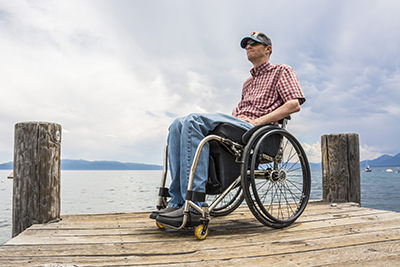Billy

One of the best skills I learned while studying mechanical engineering at the University of Washington was not actually "engineering" per se; it was the ability to problem solve.
The engineering curriculum required a mountain of prerequisites followed by an ocean of required program courses. Math, chemistry, physics, statics, dynamics, statistics, computer programming—all were appetizers before the main course. Once I was in the program, it was on to thermodynamics, fluid dynamics, system dynamics, material sciences, and design. Each class required its own unique knowledge and understanding, but there was one common thread that ran throughout every class—you were presented with a problem and needed to find a solution.
Seems simple enough, right? Well, not always. With problem solving you need to dig into it and understand the issue before searching for a solution. And when you start to search for that answer, be patient. Answers can take a long time to find and not all problems have a single fix, especially in design. But given fortitude and dedication, every once in a while a bold idea comes along that can change the world, or at least, one individual’s world.
I have been in a wheelchair since October 9, 1996, the result of a three-story fall from my fraternity window that left me paralyzed from the chest down and unable to move my fingers. Following the accident, I spent the next five months as an inpatient at the University of Washington Medical Center in rehab therapy basically relearning how to live as a wheelchair user. The rehabilitation included writing when you cannot squeeze a pen like before, using utensils for meals with nonexistent dexterity, and dressing when you are unable to stand.
Slowly and surely I made progress and discovered workarounds for each of the challenges but one that always eluded me was putting on shoes.
So what was my bold idea? Come up with a solution that allows people with limited hand function to put on their shoes independently. This may seem trivial, especially since the go-to answer is to replace the laces with Velcro, but laces are only half the issue. My biggest challenge is physically getting the shoe on my foot. I knew there had to be an answer and after staring at my feet for half a lifetime, a solution finally presented itself.
A long time friend and I developed a design concept where the whole shoe opens up utilizing a zipper that goes along the outside of the shoe and around the toe. In the unzipped position, the user can place their foot onto the shoe’s footbed unobstructed and the zipper closes the upper portion of the shoe around the foot of the user: simple and empowering.
Many people will benefit from our shoe. This includes not just people with paralysis or limited dexterity but also those who cannot bend and reach their feet easily. In addition, our shoe will benefit home healthcare, in that when an assistant is putting the shoes on a patient they can confirm their foot is flat on the footbed without any wrinkles in their sock or scrunching of their toes. Current protocol has the user simply stuffing their foot into a shoe -- without feeling in your feet, you really do not know for sure if your foot is in the shoe comfortably. Our shoe changes the game.
But our shoes are not just intended for those with specific medical needs. In order for our shoe to truly be successful it needs to work for everyone. And it does. Yes, we have a shoe with adaptive qualities, but I would not consider it the traditional "adaptive" shoe. We have created a design that is in line with current fashion styles and trends that will appeal to the masses. And in order to maximize the potential of our shoe, it is important to get them in to large department stores, which means the shoe needs to speak to all audiences.
So tying this back to where I started, engineering is about problem solving and being able to see the big picture, yet never losing focus of the specific details. Understanding the current designs available and building on them is crucial. We hear the term "universal design" frequently, which basically refers to making something safer, easier and more convenient for everyone. Typically the term applies to buildings. Why not apply the term to fashion?
For more information, visit, billyfootwear.com/